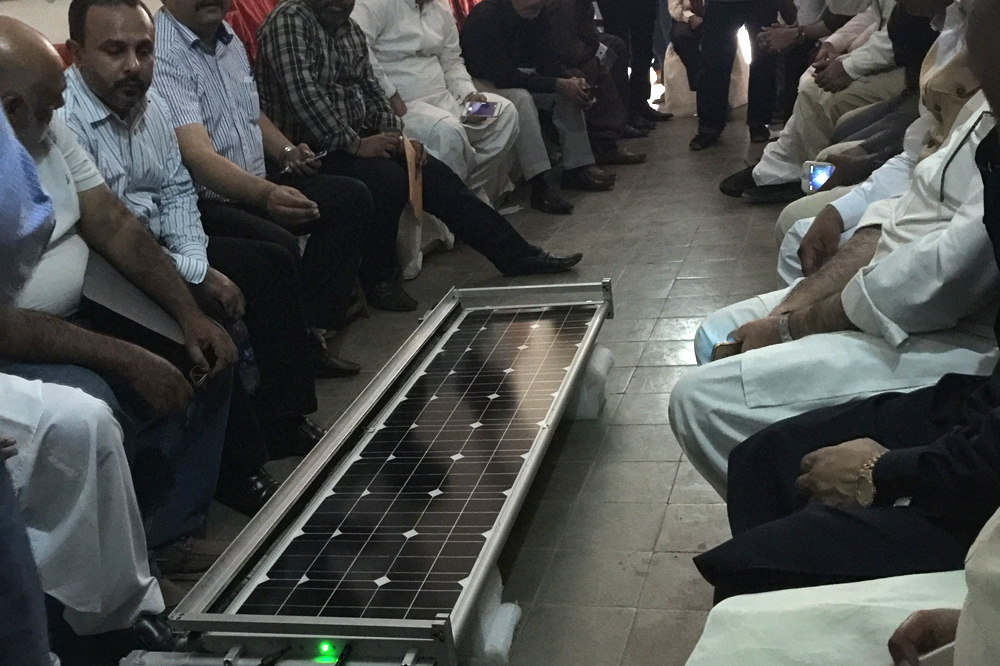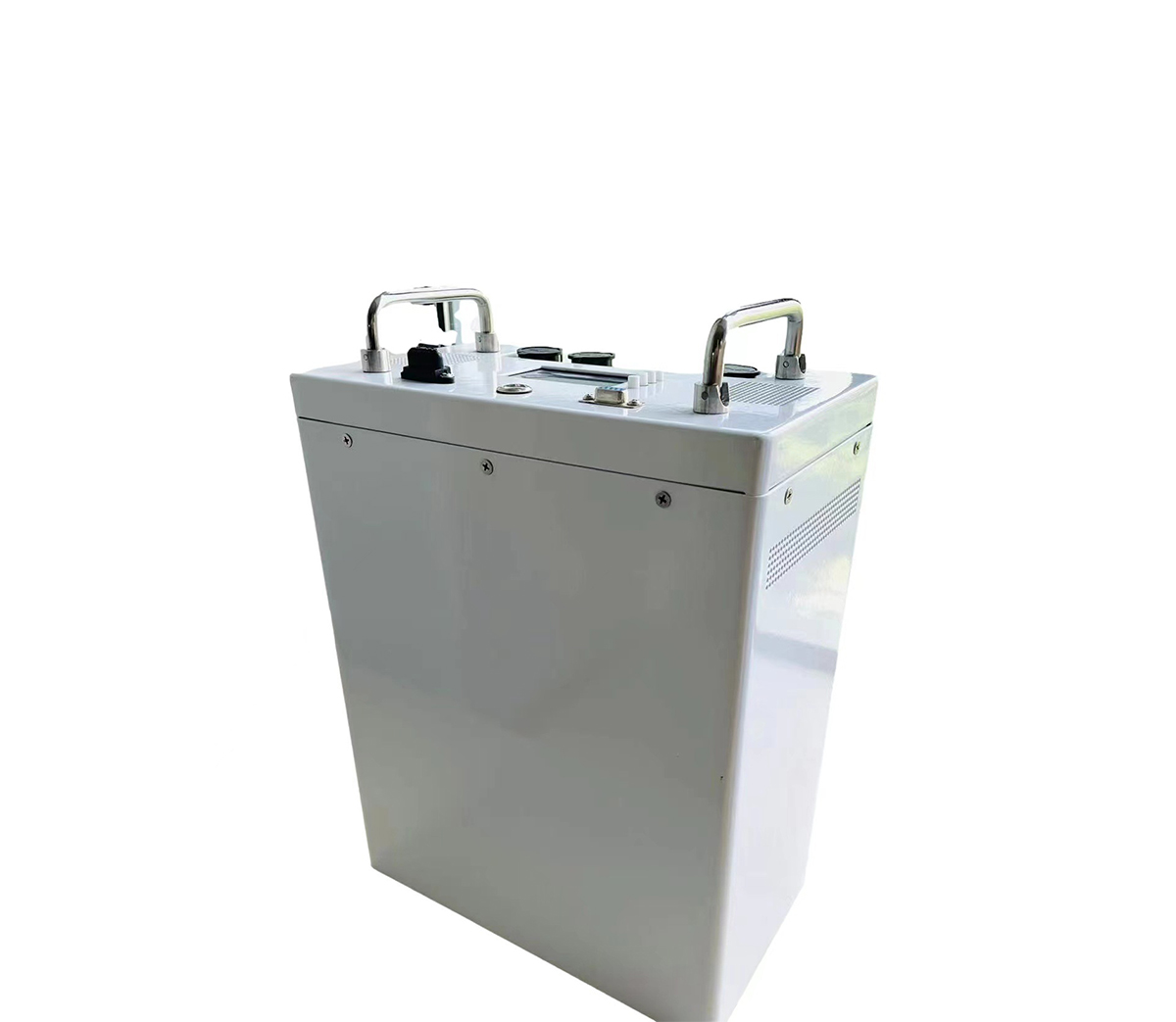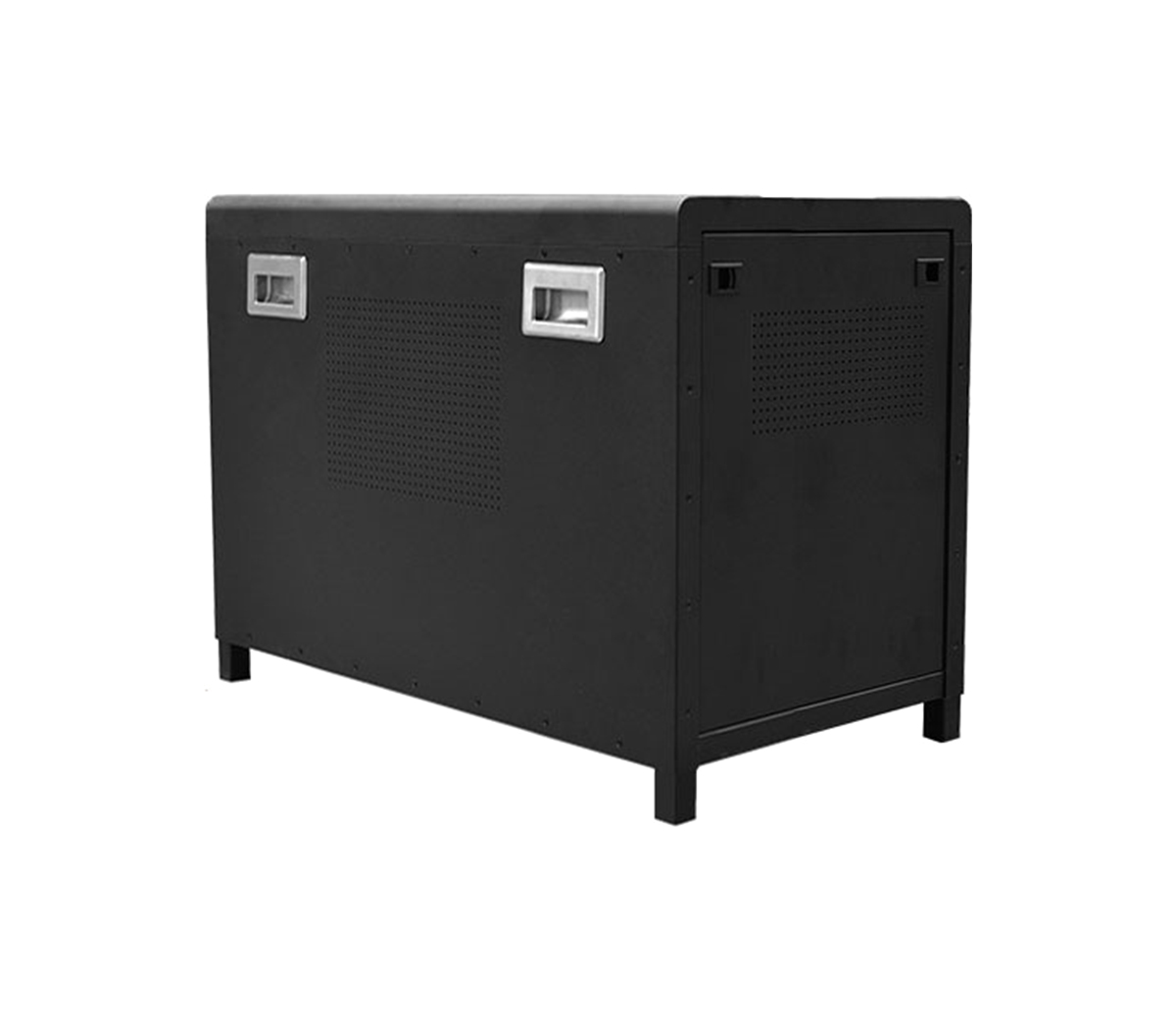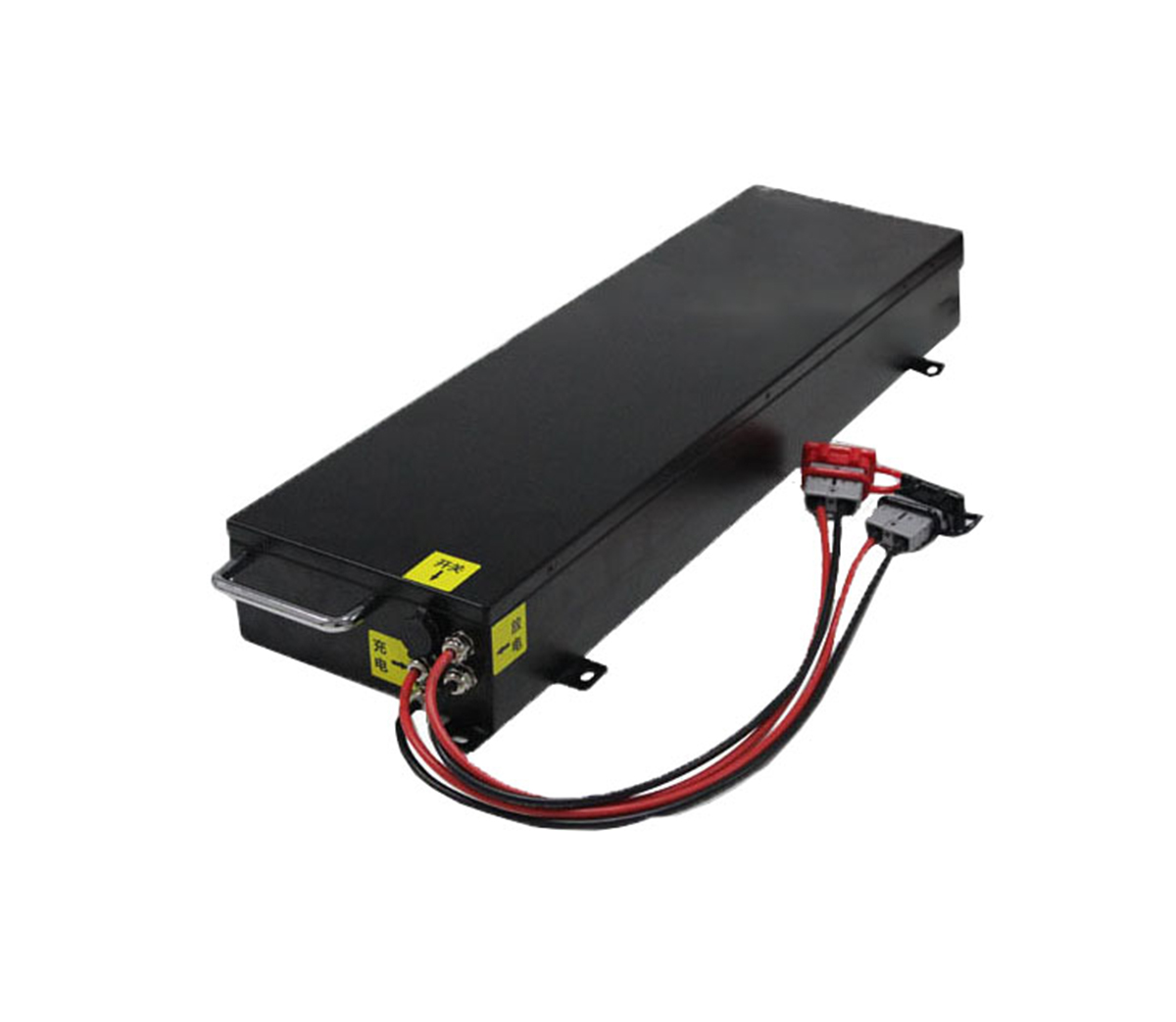
The battery pole piece rolling equipment evolved from a steel rolling
machine, and generally consists of a frame part, a transmission part and an
electric control part. According to the mechanical structure and rolling mode,
this article introduces three commonly used lithium-ion battery pole piece
rolling mills and their technological characteristics: manual screw pressurized
pole piece rolling mill, gas-liquid booster pump pressurized pole piece rolling
mill, hydraulic servo Pressurized pole piece rolling mill.
The rolling of the battery pole piece is a process in which friction is
generated between the roller and the battery pole piece, and the battery pole
piece is pulled between the rotating rollers, and the battery pole piece is
deformed under pressure. The rolling of battery pole pieces is different from
the rolling of steel blocks. Steel rolling is a process in which the plate
extends longitudinally and horizontally. Its density does not change during the
rolling process. The rolling of battery pole pieces is the battery material on
the positive and negative plates. The purpose of the compaction process is to
increase the compaction density of the positive electrode or negative electrode
material. Proper compaction density can increase the discharge capacity of the
battery, reduce the internal resistance, reduce the polarization loss, extend
the cycle life of the battery, and increase the lithium Utilization rate of ion
battery.
The battery pole piece rolling equipment evolved from the steel rolling
machinery, and generally consists of a frame part, a transmission part and an
electronic control part. According to the mechanical structure and rolling mode,
this article introduces three commonly used lithium-ion battery pole piece
rolling mills and their technological characteristics: manual screw pressurized
pole piece rolling mill, gas-liquid booster pump pressurized pole piece rolling
mill, hydraulic servo Pressurized pole piece rolling mill.
1, manual spiral pressure type pole piece rolling mill
This equipment is driven by a decelerated motor to rotate the high-hardness
press roll, and adopts the oblique block type roll gap adjustment device to
mechanically adjust the press roll gap, so that the pole pieces are formed under
pressure and the pole piece density is increased. It is mainly used for rolling
single-cell battery pole pieces. , The rolling schematic diagram is shown in
Figure 1. This kind of equipment is mainly used in laboratories, by setting the
roll gap value to make the roll load pressure on the pole piece, without
additional pressure device. Therefore, generally the actual pressure is
relatively small, and the compaction density of the rolled pole piece is
limited, and generally the maximum roll gap is limited by the mechanical device,
and there is a maximum value. Generally, it is not possible to roll too thick
pole pieces.
2. Gas-liquid booster pump pressurized pole piece rolling mill Gas-liquid
booster pump pressurization method Battery pole piece rolling mill adopts wedge
iron and lead screw to adjust the roll gap off-line, and cannot adjust the roll
gap and rolling force online in real time, cost Relatively low, it can roll
symmetrically coated battery pole pieces, as shown in Figure 2.
The roll gap of this type of rolling mill is adjusted by a
variable-thickness intermediate wedge. The principle of gap adjustment: There
are two gap-adjusting skewed irons with inclined surfaces between the bearing
seats at both ends of the roll. Usually fixed one of the thinner is called
static inclined iron, while moving the other thicker is called dynamic inclined
iron. When the two inclined irons have relative displacement in the direction of
the inclined plane, different thicknesses are combined, and then different
rollers are formed. Sew. As shown in Figure 3. Generally, a stepping motor is
used to drive the movement of the inclined iron slider to convert the rotation
movement of the stepping motor into the adjustment of the distance between the
rolls. The structure diagram is shown in Figure 4. When using the servo motor to
drive the inclined iron to move, in order to be able to see the roll gap more
intuitively, adjust the inclined iron until the gap at both ends of the roll is
exactly zero. This position of the inclined iron is called the origin, and a
limit switch is installed. It is the origin switch.
Figure 5 is a schematic diagram of the force of the inclined wedge battery
pole piece rolling mill. The hydraulic cylinder pressure F acts on the bearing
seats on both sides of the roll. When the pole piece is rolled, the hydraulic
cylinder pressure F is decomposed into the force acting on the wedge iron and
the force acting on the wedge iron. Effective rolling force on pole piece. The
basic rolling process is as follows: before the battery pole piece enters the
rolling mill, when the pressure of the rolling mill pressurized hydraulic
cylinder is zero, the roll gap value S0 is pre-adjusted. After being pressurized
by the gas-liquid booster pump, the roll chocks and the wedge iron will be
compressed, and the center distance between the two chocks will be shortened.
Since the rolls will not touch, all the pressure will act on the wedge iron. The
distance is x0 and the hydraulic cylinder preload is F, then:
"From this formula, we can see the influence of hydraulic cylinder pressure
F, pre-adjusted roll gap S0, incoming material thickness H, etc. on the
effective rolling force P and rolling thickness h of the pole piece. Draw the
elastic deformation curve A of the upper and lower rollers, the plastic
deformation curve B of the battery pole piece, and the elastic deformation curve
C of the bearing seat and the wedge iron in the same figure, as shown in Figure
6, the horizontal and vertical coordinates corresponding to point O are
respectively It is the effective rolling force and the thickness of the pole
piece.
However, in a rolling mill with iron wedge, the set hydraulic cylinder
pressure F does not completely act on the pole piece, but is broken down into
two parts, the force acting on the wedge iron and the effective rolling force
acting on the pole piece. And the components vary with the setting of roller
pressure parameters.
(1) When the hydraulic cylinder pressure F remains unchanged, the roll gap
is adjusted to a different value. If the pre-roll gap S0 is relatively small,
the bearing seat and the wedge will be separated, and all the pressure will act
on the pole pieces, and the pre-roll gap will increase from small to Before a
certain critical value, the rolling thickness will not change, but this
situation is not very stable. Beyond the critical value, the pre-roll gap S0
continues to increase, the effective rolling force acting on the pole piece
continues to decrease, and the pole piece thickness increases.
(2) When the preset roll gap S0 is more appropriate and unchanged, if the
setting value of the hydraulic cylinder pressure F is less than a certain value,
the bearing seat will be separated from the wedge iron when the roll is pressing
the pole piece, and the pressure will be all Acting on the pole piece, as the
cylinder pressure increases, the effective rolling force acting on the pole
piece also increases, and the rolling thickness decreases. However, after the
hydraulic cylinder pressure is greater than this value, the cylinder pressure
continues to increase, and the increased pressure is basically consumed on the
wedge iron, and the effective rolling force does not increase significantly.
(3) The roll gap and hydraulic cylinder pressure settings remain unchanged,
and battery pole pieces of different thicknesses are rolled. When the incoming
material thickness becomes smaller, the rolling thickness decreases, but the
pressure lost on the wedge iron increases, and the effective rolling force
decreases, so the coating compaction density will not remain constant.
(4) At present, in the actual use of the gas-liquid booster pump
pressurized pole piece rolling mill, there is no uniform method for adjusting
the roll gap and the pressure of the hydraulic cylinder. Set a relatively small
roll gap, the hydraulic cylinder hydraulic pressure is smaller; or set a larger
roll gap, the hydraulic cylinder pressure increases, the battery pole piece of
the same thickness can be rolled out. In order to make effective use of the
hydraulic cylinder pressure and reduce the system energy loss caused by the
pressure increase, the pressure consumed on the wedge iron should be reduced as
much as possible, but in order to have a certain degree of richness, the
cylinder pressure can be made slightly larger than the required rolling For the
braking force, the required pre-roll gap can be calculated according to the
following formula:
3, hydraulic servo pressurized pole piece rolling mill AGC (Automatic
GaugeControl) rolling mill is a pole piece rolling mill with on-line automatic
thickness adjustment technology, the most advanced at present is a fully
hydraulic pressure adjustment device. The hydraulic servo-controlled pressurized
pole piece rolling mill no longer uses wedge irons to adjust the roll gap value.
The hydraulic cylinder pressure can completely act on the battery pole pieces.
In order to be able to control the pressure on the battery pole pieces and the
position of the hydraulic cylinder piston in real time, the pressurization
system adopts Hydraulic servo control system for valve-controlled cylinders.
This method has simple structure, high sensitivity, can meet very strict
thickness accuracy requirements, and can realize constant pressure and constant
gap rolling. The introduction of a hydraulic servo control system with high
transmitted force and power enables the pole piece rolling mill to realize
online real-time adjustment of pressure and roll gap. When rolling single and
double layer alternately coated pole pieces, the single layer part can also be
better. The rolling effect greatly improves the quality of the rolled pole
piece. During the rolling process, the rod cavity maintains a constant pressure
through the combination of a pressure reducing valve, an overflow valve and an
accumulator. There are four plunger cylinders between the upper and lower
bearing seats, and a constant pressure is maintained by the combination of a
pressure reducing valve and an overflow valve to balance the weight of the upper
roller system.
The stiffness of the stand is measured by the roll pressing method, and the
determination process is as follows: when there is no battery pole piece between
the two rolls and the roll is idling, the upper roll is slowly pressed down so
that the upper and lower rolls directly contact and press. After the rolls are
contacted and pressed, the hydraulic servo cylinder is controlled to make the
upper roll continue to descend, causing elastic deformation of the working stand
of the rolling mill. Then the upper roll is controlled to rise slowly, the two
rolls are slowly separated, and the corresponding relationship between the
rolling force and the relative position of the hydraulic cylinder and the piston
is measured. The change in the relative position of the cylinder and the piston
reflects the elastic deformation of the working machine base.
The schematic diagram of the pressurizing mechanism of the pressurized
battery pole piece rolling mill with hydraulic servo system is shown in Figure
7. The hydraulic pressure is all acting on the pole pieces, and the effective
rolling force P is:
Among them, K is the stiffness of the entire frame, h is the thickness of
the roll, and S0 is the pre-adjusted roll gap. Hydraulic servo pressurized pole
piece rolling mill can control the pressure on the battery pole piece and the
position of the piston of the hydraulic cylinder in real time. It has two
rolling modes: constant pressure and constant roll gap.
When the roller is rolled from the slurry part of the battery pole piece to
no slurry, because the battery pole piece suddenly becomes thin, the upper
roller will suddenly drop and then quickly return to the original position, and
the elastic deformation of the rolling mill stand is reduced. The rolling force
is also reduced accordingly. When the roll is rolled from the base band part of
the battery pole piece to the slurry part, the upper roll suddenly rises and
then presses down to the required position, the elastic deformation of the
rolling mill stand increases, and the rolling force increases accordingly. But
overall, the displacement fluctuation is not very large.
At present, there is even a double closed loop control system. The inner
loop position control loop (APC) is the core control link, and its output is the
actual position of the roll or the actual roll gap, that is, the current
constant roll gap rolling. The outer ring is the pole piece thickness control
ring, which detects the pole piece thickness online in real time. The thickness
feedback signal is used to correct the roll gap setting value of the position
ring. Through hydraulic servo control, the roll moves quickly to achieve the
purpose of quickly eliminating the thickness difference.



































